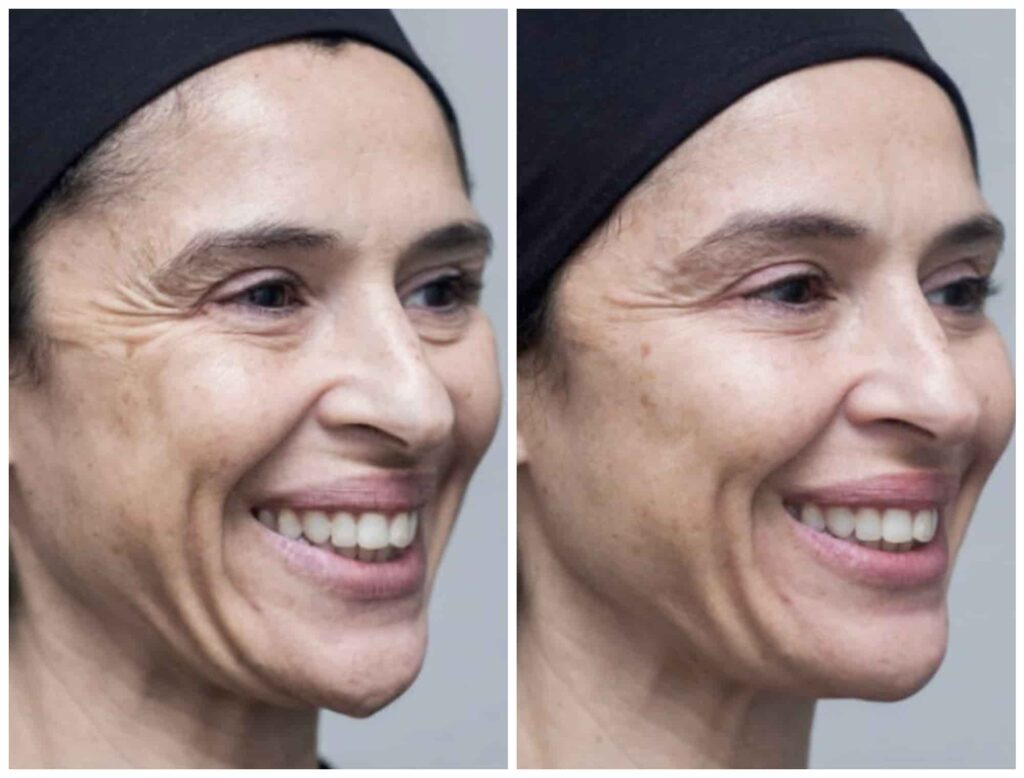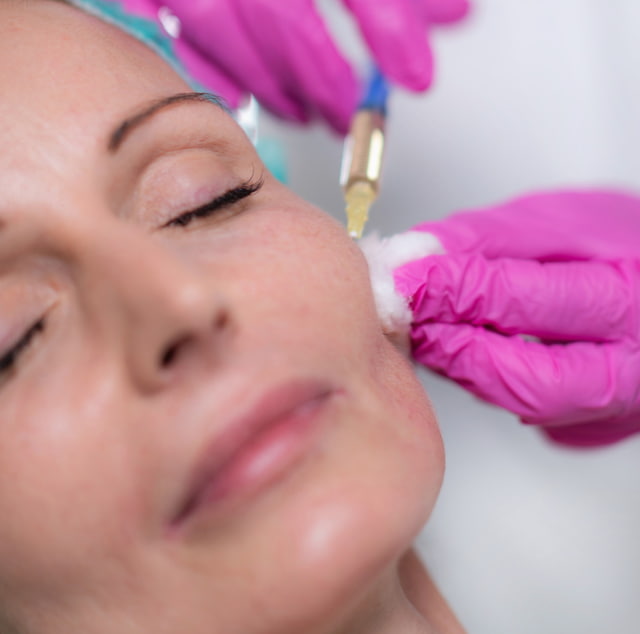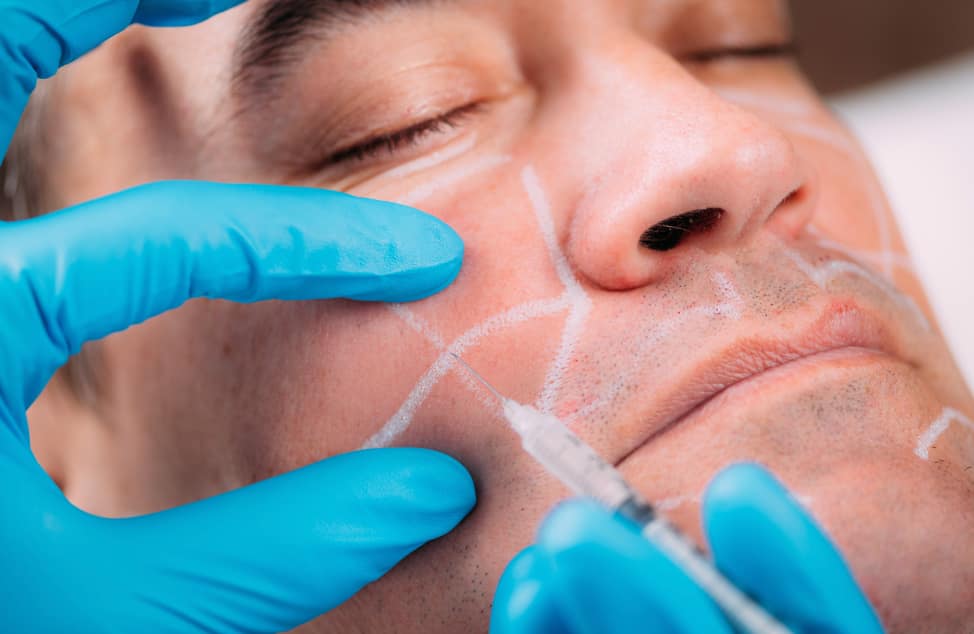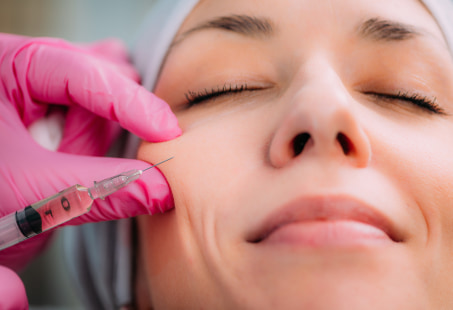If you have naturally hollow, sunken cheeks or have developed one over times as a result of weight loss or age-related skin changes, dermal fillers can help enhance or restore their volume. However, it can also help address other aesthetic concerns, such fine lines and folds in the face.
While cheek fillers might not have any downtime, there are still some important things that you need to take into consideration before getting these injectables. It’s also especially important that you find the right practitioner to get cheek fillers.
What Are Cheek Fillers?
Cheek fillers are non-surgical cosmetic injectables that involve the injection of dermal fillers into the cheeks, including the cheekbone area.

More commonly, you’ll hear about hyaluronic acid (HA) fillers being used. HA is the kind of substance that can be found in the body, including the skin, eyes and joints. It’s also a humectant that attracts and retains water, so it helps moisturise and plump up the skin.
Depending on your needs, your practitioner might go with HA-based fillers, but there are others as well, such as:
- Calcium hydroxylapatite (CaHA) – It’s a temporary, biodegradable filler which contains CaHA microspheres in an aqueous gel carrier. It can increase the volume of the cheeks and enhance the cheekbones as well.
- Poly-L-lactic acid – It’s a semi-permanent filler that can help improve the volume of hollowed cheeks. However, this type of filler can also stimulate the production of collagen.
- Polymethylmethacrylate (PMMA) – It’s a semi-permanent filler which contains PMMA microspheres in a collagen gel. It also stimulates the production of new collagen by the body.
For even better results, your practitioner might suggest additional treatments such as Botox, skin boosters, or fillers in complementary areas of your face. This approach may enhance the overall effect and make you more satisfied with the results.
What Does Cheek Filler Do?
There are different concerns that cheek fillers may help with:
- Make the cheekbones more defined and standout
- Add volume to your cheeks
- Reduce asymmetry between the two sides of your face
- Make the nasolabial folds less prominent
- Create the illusion of a lifted face (fillers don’t actually lift the face)
- Address the marionette lines around your mouth

Some people also wonder whether cheek fillers would have any effect on their jowls. By creating a more lifted look, cheek fillers might make the jowls less prominent, but the treatment options can vary depending on the severity of your jowls.
For eye bags too, your practitioner might consider addressing the area directly rather than through cheek fillers. However, these things can only be decided after your practitioner has thoroughly assessed your concern areas and understood your needs.
How Are Cheek Fillers Done?
Your practitioner may begin by applying a numbing cream on your face so you don’t feel any pain from the injections. After the area’s numb, they will inject the filler in different points on your cheeks (they may mark them out beforehand). The amount of cheek filler used will, of course, depend on your needs. It may be between 0.5 to 2 mL per cheek.

The entire treatment is likely to take less than an hour. The numbing cream can take some time to take effect, so if you’re getting it during your lunch hour, make sure to account for it.
How Long Do Cheek Fillers Take To Settle?
Cheek fillers give immediate results, but they can take some time settle. It can vary depending on the type of filler. For instance, hyaluronic acid might take a couple of weeks, but it can take 4-6 weeks for you to see the full effects of polylactic acid filler and PMMA may take around 3 months.
After that, you can enjoy the results of your treatment. If at any time you feel something’s not right or any side effects are getting worse, make sure to get in touch with your provider.
What To Expect After Cheek Fillers?
Dermal fillers can cause swelling, redness, bruising and tenderness, which can take 1 to 3 days to go away. For normal recovery, your practitioner might give you some aftercare instructions, such as:
- Avoiding smoking and drinking alcohol for 1-2 days
- Sleeping on the back and not the face for a few days
- Avoiding strenuous physical activity (like exercise) for 1-2 days
- Not wearing makeup for 1 day
Since these instructions can vary according to the specific needs of the patients, it’s best to consult your own practitioner about them.
Are Cheek Fillers Safe?
In the hands of the right practitioner, you can safely get cheek fillers, which is why it’s very important to do your research in finding the right clinic.
Still, these injectables are not without risks, some of which are:
- Infection
- Skin discolouration
- Lumpy appearance
- Scarring
- Filler migration
- Loss of vision
- Tissue necrosis
On the other hand, vascular occlusion is a serious risk, where the filler is injected into a blood vessel, causing blockage, and it further emphasises the need for you to find someone who knows and understands facial anatomy.
Moreover, cheek fillers are not advised for those who are pregnant and breastfeeding or have certain health conditions like bleeding disorders, allergies, skin conditions, autoimmune issues, etc.
How Long Do Cheek Fillers Last?
The longevity of your cheek fillers will mainly depend on the type of filler used:
- Hyaluronic acid filler – 6-12 months
- Calcium Hydroxylapatite filler – 12 months
- Poly-L-lactic acid filler – 2+ years
- Polymethylmethacrylate filler – Up to 5 years

With hyaluronic acid fillers, you have the advantage of getting the filler dissolved early on (through hyaluronidase) if you’re not happy with the results of your treatment.
How Much Are Cheek Fillers In The UK?
In the UK, cheek fillers might cost you somewhere between £500 to £1,000. Prices can vary depending on how much filler you need and the type of filler you’re getting. Moreover, the area where the clinic is located and the experience and qualifications of your provider can also make a difference.
Conclusion
Cheek fillers can quite effectively enhance the overall volume of your cheeks and add definition to your cheekbones as well. Additionally, it can address some periphery concerns as well.
If you’re also considering getting these injections, it’s very important that you find someone who’s qualified and knowledgeable of the facial anatomy, so that you can get the best possible results.
Reviewed and approved by Prof Dr Fuat Yuksel
FAQ
Do cheek fillers hurt?
You might feel some pressure from the injections. However, if numbing cream is applied before the filler injections, you’re not likely to feel pain. Some fillers also already have an anaesthetic in them.
Can cheek fillers migrate?
Too much of a filler, using the wrong type of filler, not following aftercare advice and an inexperienced practitioner may possibly lead to filler migration. Make sure to find someone who’s trained and experienced in performing cheek fillers.

